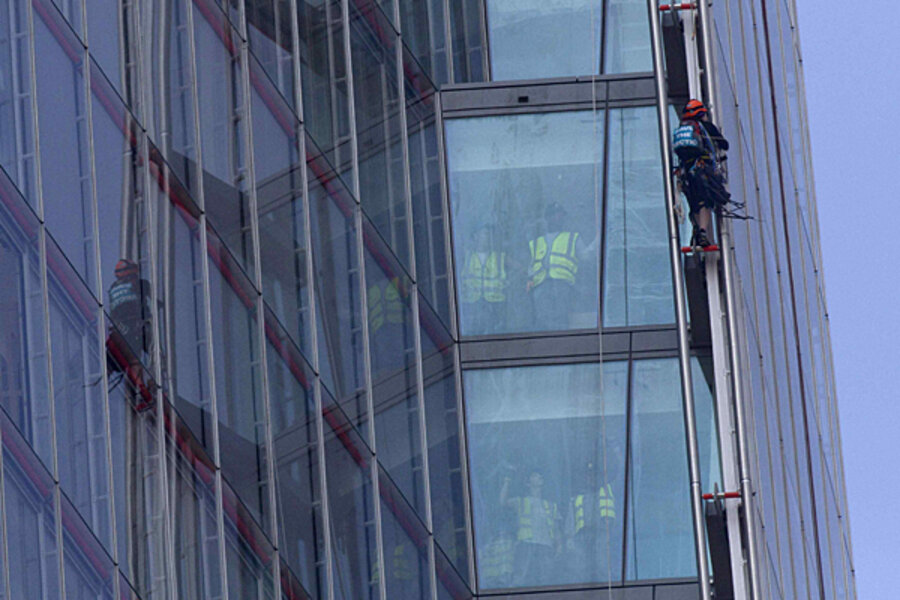Greenpeace Shard climbers: Activists protest Arctic drilling
Loading...
| London
Six environmental activists were attempting Thursday to scale the Shard, Western Europe's tallest building, to protest drilling in the Arctic by oil companies.
Greenpeace group said the six climbers, all women, hoped to affix an artwork to the top of the 310-meter (1,017-foot) tower on the south bank of the River Thames in London.
Greenpeace said the climbers were from Britain, Canada, Sweden, Poland, the Netherlands and Belgium.
It said the Renzo Piano-designed 72-story Shard had been chosen because it looms over the London offices of Royal Dutch Shell PLC, which has drilled for oil in the Arctic Sea off Alaska.
London's Metropolitan Police Force said officers were called to the building before dawn and were monitoring the situation.
By midmorning, the climbers were about halfway up the glass-clad skyscraper, which opened earlier this year.
Management of the Shard said the building was open, and "we're working with the relevant authorities to try to ensure the safety of all concerned."





